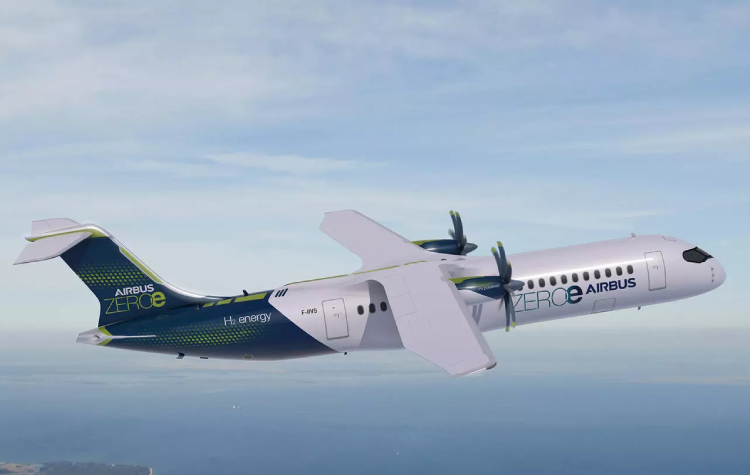In late 2023, the ZEROe teams powered on the iron pod, the future hydrogen-propulsion system designed for Airbus’ electric concept aircraft. As well as the hydrogen fuel cell system, the iron pod contains the electric motors needed to spin a propeller and the units that control and keep them cool. Its successful power on at 1.2 megawatts is a pivotal step on Airbus’ ZEROe roadmap to put a hydrogen-propulsion aircraft into service by 2035.
The power of the world’s most abundant element
In 2020, Airbus shared four hydrogen-powered aircraft concepts with the public. Three used hydrogen combustion and hybrid engines for power, and the fourth was fully electric, using hydrogen fuel cells and a propeller propulsion system. These fuel cells work by transforming the hydrogen into electricity through a chemical reaction. The by-product of the reaction is simple H2O, resulting in almost zero emissions.
The huge potential of hydrogen fuel cells to decarbonise aviation made it one of the key technologies chosen to be further explored for the ZEROe demonstrator – but there was a challenge. Although hydrogen fuel cells already existed on the market when the project began, none provided the energy needed to power an aircraft while remaining at an acceptable weight level. So in October 2020, Airbus created Aerostack, a joint venture with ElringKlinger, to develop hydrogen fuel cell stacks that would be at the heart of the electric propulsion system on a ZEROe aircraft.
Extensive testing on the fuel cell system took place in Ottobrunn, Germany, just 13 kilometres from Munich, at the E-Aircraft System House (EAS). The Airbus facility is the largest test house for alternative propulsion systems and fuels in Europe, and it is where the main components of the propulsion system that will power the demonstrator’s propellers are tested.
In June 2023, Airbus announced the successful test campaign of the hydrogen fuel cell system, which reached its full-power level of 1.2 megawatts. It was the most powerful test ever achieved in aviation of a fuel cell designed for large-scale aircraft, and set the stage for the next big step of the project: integrating the full propulsion system with the electrical motor…



